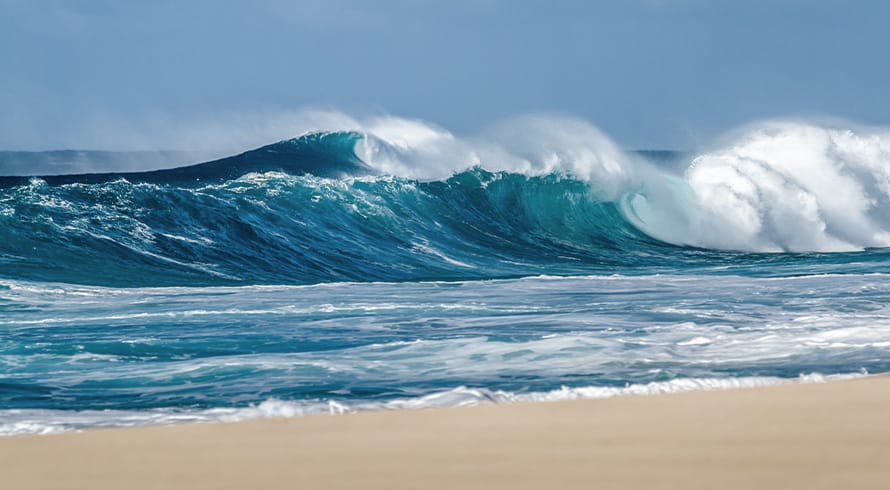Mischief in the fiery pacific
Mischief Reef, Fiery Cross Reef, Second Thomas Shoal, Subi Reef, Gaven Reef and McKennan Reef are but a few of the inconspicuous and (previously) uninhabitable natural reefs located in the South China Sea, currently at the centre of an international “tug-of-war”, the result of which may very well change the political landscape of the region.
The South China Sea is one of the world’s most strategically vital maritime regions conveying more than US$5 trillion in trade, constituting one third of all global maritime commerce. It is therefore understandable why no fewer than five governments have laid claim to portions of this sea which claims, as has recently been demonstrated, often overlap. The nations tussling for dominance are China, Malaysia, the Philippines, Vietnam and Taiwan.
China can be described as the catalyst for the current disagreement, as it is seeking to control almost the entire South China Sea. China’s claim is based upon a highly contentious U-shaped “nine–dash line” appearing on certain historical Chinese maps, dating back to 1947. The origin of and the reason for the “nine–dash line” are anything but clear.
The current dispute has arisen out of the principles of the United Nations Convention on the Law of the Sea (UNCLOS). UNCLOS is binding upon, at least, China, Malaysia and the Philippines. In accordance with the provisions of UNCLOS, only a natural formed island that can support human or economic life can justify a claim to an “exclusive economic zone” (EEZ). Such an EEZ can extend up to 200 nautical miles off the coast of such an island, making an EEZ in the South China Sea a prized asset.
The large majority of “islands” constituting the Spratly Islands, of which the contentious reefs form part, are in fact not islands at all. Insofar as these qualify as either “low-tide elevations” or “rocks” under UNCLOS, no EEZ rights follow. A low-tide elevation is simply a piece of land that is exposed at low-tide but submerged by the sea at high-tide. The Philippines have argued that Mischief Reef, Second Thomas Shoal, Subi Reef, Gaven Reef and McKennan Reef are such “low-tide elevations”. They similarly argue that Scarborough Shoal, Johnson Reef, Cuarteron Reef and Fiery Cross Reef are to be classified as rocks. The definition of “rocks” under UNCLOS is an island “which cannot sustain human habitation or economic life of their own”. Under UNCLOS, rocks only entitle a party to a 12 nautical mile territorial sea around it (as opposed to the 200 nautical mile EEZ surrounding islands).
Over the last few years, China has asserted its influence and control over the region and has implemented rather drastic land reclamation efforts in relation to certain of these “islands”. For example, in 2014 the Fiery Cross Reef (over which four governments currently claim control), comprised one small weather station. Now, in 2016, China has transformed it into a habitable man-made “island” containing a running track, basketball courts and most importantly, a runway capable of entertaining military jets. China has made its intentions for the region clear and, with its resources heavily overshadowing those of nations competing for the region, it has no reason to back down.
On 22 January 2013, the Philippines served a notification and statement of claim on China, through the Permanent Court of Arbitration (seated in The Hague), “with respect to the dispute with China over the maritime jurisdiction of the Philippines in the West Philippine Sea”. The arbitration was initiated in accordance with the provisions of s2 of Part XV of UNCLOS. China responded by means of a diplomatic note and refused to engage in the arbitration proceedings. China firstly disputed the tribunal’s jurisdiction to entertain the dispute and secondly disputed the merits of the claims made by the Philippines. The Permanent Court of Arbitration has already ruled that it has jurisdiction to entertain the dispute and is expected to hand down its ruling on the merits of the dispute imminently.
But what happens if the tribunal rules in favour of the Philippines? China has already indicated that it will not acknowledge or abide by any ruling of the arbitral tribunal. China has argued that the issues in dispute relate to the “sovereignty of nations” and as such fall outside of the jurisdiction of any tribunal constituted in accordance with UNCLOS.
None of the other parties involved in the current dispute possess the necessary resources to challenge the might of China. One nation with the power to challenge China’s tactics in the region is the US. In 2010, Hillary Clinton, the then US Secretary of State stated that the US “has a national interest in freedom of navigation… and respect for international law in the South China Sea”. In the words of Rear Admiral Marcus Hitchcock, current commander of the Stennis strike group, the US is “very invested in the economic development and building of commerce in the region”. The USS John C. Stennis, a Nimitz-class nuclear-powered aircraft carrier, duly escorted by a trio of guided-missile destroyers and an Aegis Cruiser, together with more than 3000 military personnel, have been deployed by the US to the region.
Colonel Liu Mingfu, a Chinese military commentator has expressed a view that “by using the South China Sea to contain China, America has turned a regional issue into a global issue…too many countries are now involved, and that’s dangerous”.
On 24 May 2016 (with reference to the South China Sea), President Obama stated that “nations are sovereign, and no matter how large or small a nation may be, its territory should be respected…big nations should not bully smaller ones”. The US have also expressed an interest in the outcome of the arbitration proceedings and previously requested permission to send an observer to the proceedings. The request was, however, declined and as a result, the US did not play any part in the arbitration proceeding. The request was declined for a simple reason: the US had not ratified and was not a party to UNCLOS. Awkward.
The US may very well find itself in a rather uncomfortable position by trying to assist with the enforcement of an arbitral award issued against China arising out of an international convention it took a deliberate decision not to be a party of. Matters will become even more difficult if China follows through with its threat to leave UNCLOS if the award is granted in favour of the Philippines. A “bully brawl” may very well be brewing in the South China Sea…
The information and material published on this website is provided for general purposes only and does not constitute legal advice. We make every effort to ensure that the content is updated regularly and to offer the most current and accurate information. Please consult one of our lawyers on any specific legal problem or matter. We accept no responsibility for any loss or damage, whether direct or consequential, which may arise from reliance on the information contained in these pages. Please refer to our full terms and conditions. Copyright © 2026 Cliffe Dekker Hofmeyr. All rights reserved. For permission to reproduce an article or publication, please contact us cliffedekkerhofmeyr@cdhlegal.com.
Subscribe
We support our clients’ strategic and operational needs by offering innovative, integrated and high quality thought leadership. To stay up to date on the latest legal developments that may potentially impact your business, subscribe to our alerts, seminar and webinar invitations.
Subscribe




